

How to Turn Difficult Students into Cooperative Learners
How do you deal with challenging students? Do you have students who are disruptive, disrespectful, defiant, or disengaged in your classroom? Have you also needed help maintaining order, discipline, and respect in your classroom? Do you feel frustrated, stressed, or overwhelmed by the challenges of managing difficult students?
As a teacher, you may have encountered some students who are challenging to deal with. They may challenge your authority, ignore your instructions, or refuse to participate in class activities. Sadly, they may cause problems for you and other students.


You may feel frustrated, angry, or helpless, and you may wonder why these students behave that way and what you can do to change their behavior. Indeed, you may sometimes think that they are hopeless. But don’t give up on them! These students are not awful or stupid. They are just struggling with issues that make them act out in the classroom. Besides, they may lack motivation, confidence, or self-control and need more support, guidance, or attention.
You can help these students become more cooperative and productive learners. It is no coincidence that you have met these students because you have a mission to assist them in overcoming challenges and achieving their potential. You can help them develop positive attitudes and behaviors that benefit them in school and beyond.


There are ways to deal with this type of student effectively and positively. In this article, I will share some of these tips and strategies for classroom management that I learned from almost a decade of teaching, reading a lot of research, and speaking with colleagues, students, and experts.
Why Do Students Behave Poorly?
Before we dive into the tips and strategies for dealing with students, let us first understand why students behave poorly in the first place. Many possible reasons and factors can contribute to poor behavior in students.
- Lack of motivation or interest.
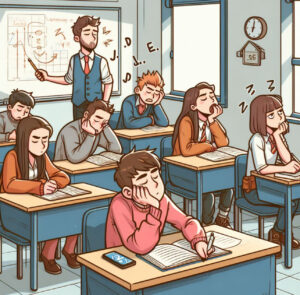

Students may need to be more interested or engaged in the subject matter and the activities. Besides, they may need to see the relevance or value of their learning. Similarly, they may lack intrinsic or extrinsic motivation to learn or participate.
- Some of them may lack skills or knowledge.
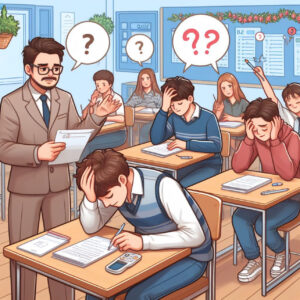

Some students may need to learn how to complete the tasks or assignments. Moreover, they may feel frustrated, confused, or overwhelmed by the difficulty or complexity of the work. They may also need more confidence or self-efficacy in their abilities.
- Absence of support or guidance.


Also, some students may need more support from teachers, peers, or family. Thus, they may feel neglected, ignored, or misunderstood by others. Besides, they may need more feedback or direction on how to improve or succeed.
- Lack of rules or expectations.
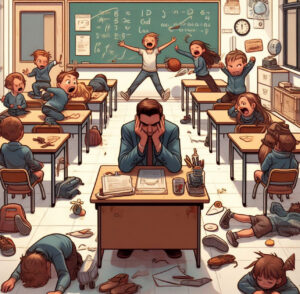

Additionally, some may need to learn or understand the rules or expectations of the classroom, school, or society. Also, they may not have clear boundaries or consequences for their actions. Moreover, they may need more consistency or fairness in the rules or expectations.
- Less to lack of respect or trust.
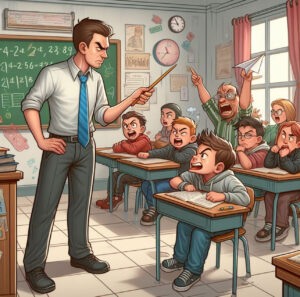

Some may not respect or trust the teacher, their peers, or themselves. In addition, they may have negative attitudes or beliefs about others or themselves. The worst part is they may also lack empathy or compassion for others or themselves.
- Personal or emotional issues.


They may have physical, mental, or emotional issues that interfere with their learning or well-being. Moreover, some may have family, social, or environmental problems that influence their behavior.
These are just some of the possible reasons and factors that can cause poor behavior in students. Of course, not all students behave poorly for the same reasons or to the same extent. It is important to remember that every student is unique, and we should strive to meet their needs. Therefore, it is crucial to understand each student to tailor your approach accordingly.
Tips and Strategies
Now, let us look at some tips and strategies to deal with them effectively and positively.
- Establish and communicate clear rules and expectations.
One of the first steps to prevent or reduce poor behavior in your classroom is to establish and communicate clear rules and expectations for your students. Set rules and expectations that are reasonable, relevant, and realistic. Also, explain the rationale and the benefits of following them. Importantly, involve them in creating and agreeing on the rules and expectations so that they feel ownership and responsibility for them.
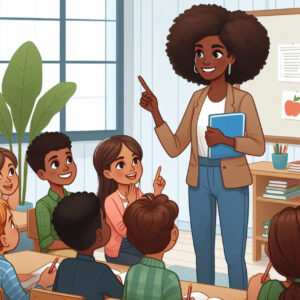

For example, you can establish a rule, “Respect yourself and others.” Explain that this rule means you and your students should treat each other with kindness, honesty, and fairness. Furthermore, this rule will help create a positive and safe learning environment for everyone. On top of that, you can involve them in defining what respect looks and sounds like in your classroom and the consequences of not respecting yourself or others.
- Provide positive reinforcement and feedback.
The second way is to provide positive feedback for your students. Unquestionably, you should praise and reward them for their behavior, effort, progress, and achievement. Also, give them constructive and specific feedback on how to improve or maintain their behavior. Use positive language and tone and avoid negative labels or criticism.


For example, you can praise a student who raises his hand before speaking by saying, “Thank you for raising your hand, John. That shows me that you are respectful and attentive.” You can also reward a student who completes her homework on time by giving her a sticker or a certificate. As well as that, provide feedback to a student who talks too much during group work by saying, “I appreciate your enthusiasm, Lisa. But I also need you to listen to your group members and take turns speaking. That will help you learn from each other and work better as a team.”
- Use preventive and corrective strategies.
Preventive strategies are those that you use before the behavior occurs to prevent or minimize it. Correctives are those after the behavior to stop or change it. Some examples are:
- Anticipate and plan for potential problems or triggers;
- Provide clear and explicit instructions and expectations;
- Use engaging and differentiated activities and materials;
- Establish and maintain routines and transitions;
- Monitor and supervise your student’s behavior and progress;
- Build rapport and trust with your students;
- Teach and model social and emotional skills.
Some examples of corrective strategies that you can use are:
- Non-verbal cues or signals to redirect or remind your students
- Verbal reminders or warnings to correct or stop them
- Logical and natural consequences of teaching your students
- Time-out or removal to isolate or separate them
- Use restorative practices to repair or restore your students
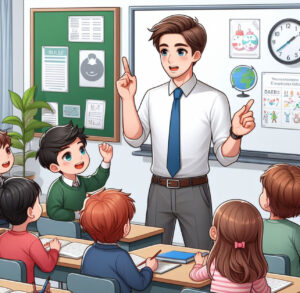

For example, you can anticipate and plan for a problem by knowing that some students are restless or distracted after lunch. You can provide clear and explicit instructions and expectations by telling them what, how, and why they must do it. Moreover, you can use engaging and differentiated activities and materials by giving them a choice of tasks that suit their interests and abilities. Besides, you can maintain routines and transitions with a consistent schedule and signals for changing activities.
With this, you can monitor and supervise your student’s behavior and progress by walking around the classroom and checking on their work. Also, you can build rapport and trust with your students by greeting them, calling them by name, and showing interest in their lives. In addition, you can teach and model social and emotional skills by explaining and demonstrating how to express feelings, cope with stress, or resolve conflicts.


Furthermore, you can use non-verbal cues or signals to redirect or remind them by making eye contact, nodding, pointing, or gesturing. You can use verbal reminders or warnings to correct or stop them by saying their names, stating the rule, or giving a countdown. Also, logical and natural consequences of teaching your students by linking them to the behavior, such as losing a privilege, apologizing, or fixing a mistake, can help.
Another way other teachers do this is by using time-out or removal to isolate or separate your students by sending them to a designated area in the classroom, the office, or another classroom for a short period. Lastly, you can use restorative practices to repair or restore them by having them reflect on their demeanor, take accountability for their activities, and make amends to those affected.
- Support and motivate your students.
The following way is to support your students. Please provide them with the necessary support and guidance to succeed and improve. You should also help your students to see the benefits of learning and participating.
Some examples are:
- Scaffolding and differentiation for your students
- Providing choices and options for them
- Come up with challenges and opportunities for your students
- Provide recognition and appreciation
- Yield collaboration and cooperation
- Allow relevance and meaning for your students


For example, you can provide scaffolding and differentiation by splitting intricate tasks into smaller steps, providing examples or models, giving hints or clues, or offering support. You can also provide choices and options by letting them choose their topics, partners, materials, or products. Moreover, you can lay out challenges and opportunities by setting high but attainable expectations, giving them feedback and encouragement, or exposing them to new or different experiences.
Furthermore, you can provide recognition and appreciation by celebrating their achievements, displaying their work, or sending positive notes or messages. Also, you can allow collaboration and cooperation by arranging them in groups or pairs, assigning them roles or responsibilities, or facilitating their interaction and discussion. As their teacher, you can provide relevance and meaning for your students by connecting the content to their lives and interests or showing them the purpose or value of learning.
- Seek help and collaboration.
Another way is to seek help from others. Do not try to deal with them alone. You should seek help and collaboration from other teachers, staff, administrators, counselors, parents, or experts who can offer advice, assistance, or resources. Importantly, you should regularly communicate and coordinate with them and share information, ideas, or strategies.
Specifically, you can seek help and collaboration from other teachers by asking them how they deal with similar situations or observing how they manage their classrooms. Seek help from staff by asking them to assist you with supervision, intervention, or documentation. Also, you can ask for help and collaboration with administrators by asking them to support you with policies, procedures, or referrals.


Similarly, you can seek assistance from the school’s guidance counselors by asking them to provide guidance, counseling, or assessment. You can also ask for help and collaboration from parents by asking them to share their insights and concerns or to reinforce your rules or expectations at home.
Conclusion
To conclude, those are some techniques to manage challenging students in your classroom. Of course, these are not the only ones, nor are they foolproof or guaranteed. Try different ones combined or modify them according to your situation.
The important thing is to be proactive, consistent, respectful, and positive when dealing with students. Be adaptable and willing to acclimate your teaching methods. We need to tailor our teaching to the individual needs of each student. By being compassionate, you can create more supporting and inclusive learning conditions for all students.
If you have any questions or comments, feel free to leave them below. Thanks for reading, and I’ll see you at the next one!




